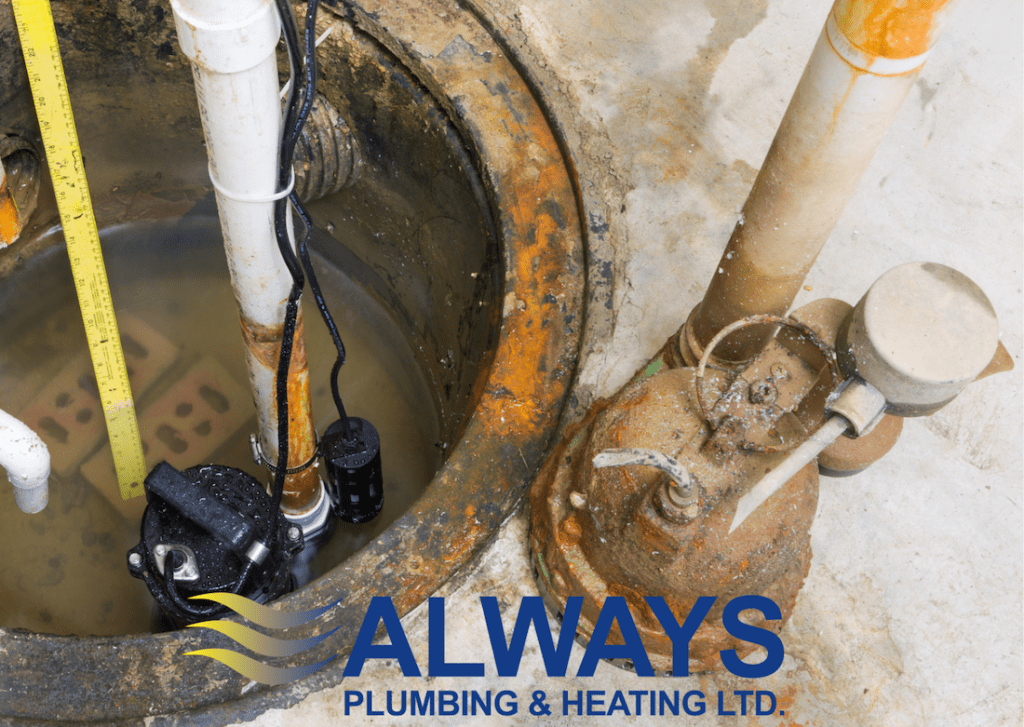Your homes’ sump pump is one of the most important parts of your home plumbing fixtures in flood prevention. Sump pumps are designed to keep basements from flooding when the water table is higher than your homes’ foundation, particularly in times during large rainfall or after large snowmelt. Edmonton and area commonly receive large volumes of rain, not just in Spring, but in Summer, and sometimes into Fall. In addition to that, with the first snowmelt each the Spring, your sump pump will kick into full gear. Most, but not all, homes in Edmonton and area will be equipped with at least one sump pump, usually found in your basement utility room. With this knowledge at hand, it is prudent that homeowners pay close attention to the functioning of their sump pumps to ensure that their homes will be kept safe from water damage. There are several steps that homeowners can take to ensure their sump pump is optimally functional.
Do It Yourself Sump Pump Maintenance
Check the Sump Pump for Debris
To check the sump pump for debris, shine a flashlight into the pit that the pump is located, looking for sediment or other contaminants. Remove any debris as it will affect the performance of the pump. You can do this using a slotted spoon, or for smaller sediment, a kitchen sieve with very small holes in it. It is ideal to do this at least every Spring.
Inspect the Sump Pump Check Valve
Also referred to as a one-way valve, this valve ensures that water doesn’t re-enter the sump pump once it shuts off. The valve prevents backflow of water that it has already pumped out, thus making the device a one-way flow system. Check the valve on the water outlet pipe, and ensure the arrow is pointing away from the sump pump.
Sump Pump Routine Cleaning
Clean out both the relief hole and the impeller. To locate the relief hole, find the small opening between the sump pump discharge and the check valve. It can be cleaned using a cotton swab or a toothbrush. The impeller is the filtering mechanism attached to the sump pump. This can get clogged very easily and it should be routinely cleaned, at least monthly, or more often during times of heavy usage.
Test Your Sump Pump
Fill a large bucket with 3 gallons of water and pour it into the sump pump pit. The pump should start automatically, draining the water out of the pit. Try this twice consecutively to ensure the pump is in working order.
Back-up Power Source for Sump Pump
Because the sump pump is powered by electricity, it is important to ensure that your pump has a backup power source. Most power outages happen during major storms, which subsequently is when most basement flooding occurs. If your sump pump doesn’t have a backup power source and your home experiences a power outage during heavy rainfall, your sump pump will not function and the water has nowhere to go but into your home. Install a backup battery on your sump pump to provide you peace of mind protection in this instance.
Redundant System
A redundant system is a backup sump pump. Many homes have both a primary pump as well as a secondary backup pump. Having an emergency backup sump pump will provide the best protection against flooding.
Sump Pump Failure Alarm
Last but not least, a wifi powered sump pump alarm is a must for the homeowner who wants true optimal peace of mind surrounding their homes sump pump system.
Make sure that your home is kept free from flooding and water damage. Check and maintain your sump pump annually to keep it clean and running efficiently. You’ll also want to make sure that it is serviced by a professional at least once a year before the summer or fall. Remember that Always Plumbing & Heating can help you with all of your sump pump repairs. If it is determined that your system is due to be replaced, our skilled plumbers will provide you with options for any and all of the devices listed above, or full integrated smart systems that contain both a primary and backup pump with Wifi remote monitoring.
